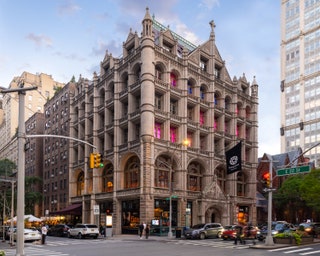
“Top 5 Must-See Art Exhibitions in New York City Right Now”

# The Importance of Art in Understanding and Expressing Identity
Art has long served as a powerful means of communication, allowing artists to convey their emotions, experiences, and perspectives on the world. Whether through painting, sculpture, mixed media, or digital forms, art provides a platform for individuals to express their identities, challenge societal norms, and offer unique insights into cultural and personal narratives.
## Art as a Reflection of the Artist
One of the most compelling aspects of art is its ability to reveal personal dimensions of an artist’s life. A current example is the exhibition of **Sylvia Sleigh**, an artist renowned for capturing her friends and lovers in intimate settings. Her deeply personal paintings emphasize the relationships and emotions that shaped her world. Similarly, **Paul Gardère**’s mixed media works provide glimpses into the complexities of his life, merging artistic techniques with autobiographical details to paint a portrait beyond the canvas.
By engaging with such works, viewers gain a deeper understanding of the artists’ inner worlds, fostering connections between the creator and the audience. This engagement enhances appreciation for art’s ability to communicate universal experiences while maintaining personal specificity.
## The Role of Art in Social Commentary
Artists frequently utilize their work to critique social structures and address contemporary issues. A prime example of this is **Kenneth Tam**’s exhibition, *The Medallion*, which provides a thought-provoking reflection on the impact of technology and capitalism on society. As one reviewer noted, Tam’s work underscores how “tides of technology wielded for personal enrichment rather than societal improvement will obliterate us with cold ease.”
Similarly, **Christine Sun Kim** uses visual and textual art to examine societal attitudes toward language and communication. Her art challenges traditional views of verbal and nonverbal expression while representing the nuanced experiences of the Deaf community. Through their work, artists like Tam and Kim create visual narratives that encourage reflection, sparking critical conversations about structural inequality, identity, and the future of human interaction.
## The Timelessness of Artistic Expression
Many artists derive inspiration from both past and present, blending historical influences with modern-day concerns. **Rudy Burckhardt**, for instance, captured the “oddness of the ordinary” in his paintings, which remain relevant even decades later. His ability to depict everyday life with a keen sense of observation makes his work timeless, ensuring that future generations can continue to connect with his artistic vision.
Art also allows for the reinterpretation of traditional themes in contemporary contexts. **Sylvia Sleigh** challenges classic representations of gender and the human form by reversing traditional roles, portraying men in poses historically reserved for female subjects. In doing so, she redefines artistic norms and empowers viewers to rethink conventional artistic expressions of identity.
## The Role of Art in Cultural Identity
Art plays a crucial role in preserving and expressing cultural identity. The works of **Paul Gardère**, for instance, incorporate themes of Haitian heritage, bridging personal experience with broader conversations on diaspora and belonging. Through his vibrant and layered compositions, Gardère’s art offers not only aesthetic appeal but also a cultural dialogue that resonates with those who share his background.
Similarly, artistic institutions such as the **Whitney Museum of American Art** regularly host exhibitions that highlight the work of underrepresented voices, ensuring that diverse cultural narratives receive recognition and appreciation. By amplifying voices that have been marginalized in the past, the art world takes significant steps toward inclusivity and diversity.
## Supporting the Arts
In a world where independent and critical journalism is increasingly rare, supporting the arts is more important than ever. Organizations and publications dedicated to highlighting and critiquing art provide essential platforms for artists whose work challenges conventions and inspires discussion. Readers and art enthusiasts can contribute to the sustainability of such initiatives through subscriptions, memberships, and active participation in the arts community.
## Conclusion
Art is more than just aesthetic expression—it is a vital tool for understanding identity, challenging societal norms, and preserving cultural heritage. Through exhibitions like those of **Kenneth Tam, Sylvia Sleigh, Paul Gardère, Rudy Burckhardt, and Christine Sun Kim**, we see how artists use their work to communicate complex ideas and personal experiences. By engaging with and supporting artistic endeavors, we foster a richer and more inclusive cultural landscape, ensuring that art continues to inspire, critique, and evolve for generations to come.